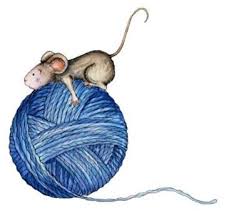Useful Tips for Crochet
Hello, everyone!
Here are some useful tips, which I think can help crochet beginners.
If you have what to add, please, write your ideas in the comments below.
1. Avoid tangling your yarn
Tangles are a crocheters nightmare, as when left unspotted they lead to knots! One of the great joys of crochet is it can enable a calming, meditative state, but the downside is it’s very easy to tangle yarn and create knots without noticing. In turn this leads to you unravelling your work and beginning again.
2. Use a ball of yarn to improve tension
You will get better results if you turn your skein of yarn into a ball of yarn before you begin. This will also help to avoid tangling as well as improving the tension. It’s possible to do this by hand or if you prefer, use a ball winder.
3. Remove obstacles
Make sure to remove anything that is going to get in your way and affect your progress. Tie back long hair as it might get tangled in your project. Remove jewellery, particularly rings and bracelets as they can get caught in the yarn.
4. Position your yarn correctly
You want the ball of yarn to unwind easily whilst you crochet. Place it in your lap or at your feet. If you are crocheting whilst out and about, place it in a roomy bag so it can unwind without rolling off.
5. Choose the right crochet hook
Crochet hooks come in bamboo, plastic and aluminium and range in size from 2-16mm. For a beginner we recommend a regular medium sized hook to start. If you find your work is too tight you need a larger crochet hook. And conversely if your work is too loose, a smaller hook. The yarn label will suggest a hook size, but this is only a suggestion. There is no right answer; it will take experimentation and practice to find the best hook for you.
6. Avoid changing hooks in the middle of the project
Switching hooks in the middle of the project can create inconsistency. You want your stitches to remain uniform throughout. Choose your hook and stick to it!
7. Take time to make a tension swatch
Making a tension swatch helps you to check that your tension matches the pattern you are working with. It’s worth taking the time to make a swatch before you begin. In fact, this is one of the most important steps to ensure your project ends up the right size.
8. Don’t be afraid to unravel
It’s ok to go back if you have made a mistake. Unravel the stitches up to that point and begin again.
9. Make mistakes
Experimentation and therefore making mistakes is part of the process! You’ll learn something new each time even if it goes wrong. It’s ok to go off pattern.
10. To figure out how much yarn/thread you’ll need for a project, see how many rows you can get out of one skein/ball, then figure out how many rows your project needs. Divide the project’s number of rows by the number of rows the skein gave you, and you know how many skeins/balls you need to buy.

I needed that info about tangled yarn. I am buying a ball winder right now!
There are a couple of tips that I have taken for granted. Thank you for the reminder.